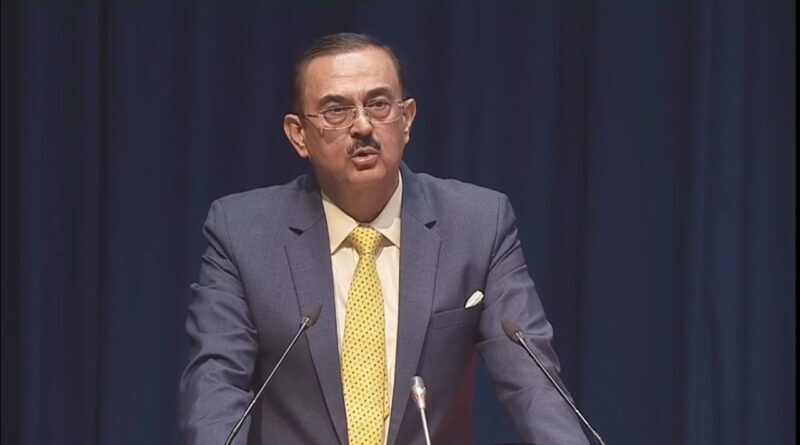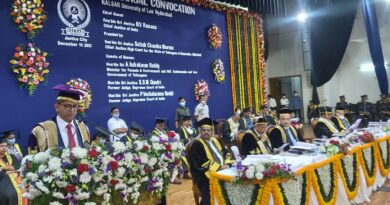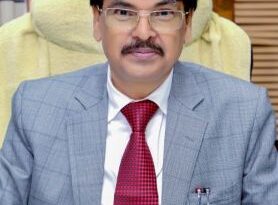SCBA President Urges Relocation of Judicial Museum, Calls for Better Facilities for Lawyers
(Judicial Quest News Network)
New Delhi 23-06-2025 Supreme Court Bar Association (SCBA) President Vikas Singh has formally requested the relocation of the National Judicial Museum and Archive to a more accessible site within the Supreme Court campus. In a letter addressed to the Chief Justice of India and the BR Gavai, Singh proposed that the museum be shifted to the vacant areas of the additional building—originally part of the Appu Ghar complex—while the current museum space, formerly the Registrar Library, be repurposed for use by bar members.
In this context, a letter dated 6th November, 2024, was sent in my capacity as the three-term President of the SCBA, urging the former Chief Justice of India, Hon’ble Dr. Justice D.Y. Chandrachud (Retd.), to revoke the decision to convert the Judges’ Library into the National Judicial Museum and Archive, and to cancel its scheduled inauguration on 7th November, 2024. I had emphasized that situating the museum within a high-security zone renders it unsuitable for public access, and that the decision was taken without any consultation with the Bar, which is an equal and essential stakeholder in this institution.
“The Additional Building Complex was originally allotted to Appu Ghar. After the expiry of their lease, the land was reallotted to the Supreme Court for the purpose of constructing lawyers’ chambers. When Appu Ghar was refusing to vacate the premises, it was the Supreme Court Bar Association who filed a petition before the Hon’ble Delhi High Court. Pursuant to the directions issued by the Hon’ble Delhi High Court, the premises were vacated by Appu Ghar and handed over to the Supreme Court. However, it is deeply ironic that only a small fraction of the constructed area has actually been utilized for lawyers’ chambers. Even after the chambers were built, their allotment remained stalled for over three years, and it was only through your intervention, along with that of Justice Surya Kant, that the allotment process could finally be initiated.”
Reiterating the SCBA’s long-standing objection to the museum’s current location in a high-security zone, Singh criticized the lack of consultation with the Bar before the space was designated. He highlighted that the security restrictions severely limit access for lawyers, clients, and the public, undermining the purpose of such a space intended for public engagement and legal education.
To address the issue, Singh proposed two measures:
- Downgrade the security status of the additional building area to match that of the lawyer chambers in the main campus.
- Relocate the National Judicial Museum to the vacant additional building area and convert the existing museum space into soundproof chambers and cubicles to support virtual hearings and client meetings.
Singh emphasized that the additional building area, once allotted to Appu Ghar, was reassigned for lawyers’ chambers after the amusement park’s lease expired. Despite legal efforts by the SCBA to reclaim this space, its development into usable chambers was delayed for over three years until recent interventions by CJI D.Y. Chandrachud’s successor, CJI Gavai, and Justice Sanjiv Khanna.
Singh criticized the Supreme Court Registry’s justification of high-security classification due to connecting tunnels, arguing that this could be resolved with proper access control at tunnel entry points rather than broadly restricting access.
“The Bar is an integral part of this esteemed institution, and its needs and requirements are both legitimate and essential to the effective functioning of the judiciary. We respectfully urge consideration of the relocation of the National Judicial Museum and Archive to the Additional Building of the Supreme Court, allowing the existing space to be repurposed for building soundproof chambers and cubicles for the members of the Bar to meet their growing professional needs.”
He also expressed concern that several key facilities in the additional building—such as meeting rooms and common areas—remain underutilized due to these restrictions. The current setup, he said, not only limits use but also hinders participation in court events like oath-taking ceremonies and farewell functions.
Singh urged that these changes be considered as part of the Supreme Court’s ongoing infrastructural planning.
This appeal follows a series of protests by the SCBA, including its October 24, 2024 resolution objecting to unilateral decisions regarding the Supreme Court’s emblem, the Lady Justice statue, and the museum. The association also boycotted the museum’s inauguration on November 7, 2024, demanding that the former Judges’ Library space be designated for a bar lounge and library instead.
Past grievances also included the installation of glass panels for centralized air conditioning during CJI Chandrachud’s term, which were later removed under CJI Gavai’s administration due to space constraints and inconvenience to court users. Additionally, the court has restored its traditional logo, reflecting a broader response to concerns raised by the Bar.
Singh’s renewed appeal highlights the need for inclusive planning and shared decision-making to ensure that the Supreme Court campus serves both the judiciary and the legal community effectively.




